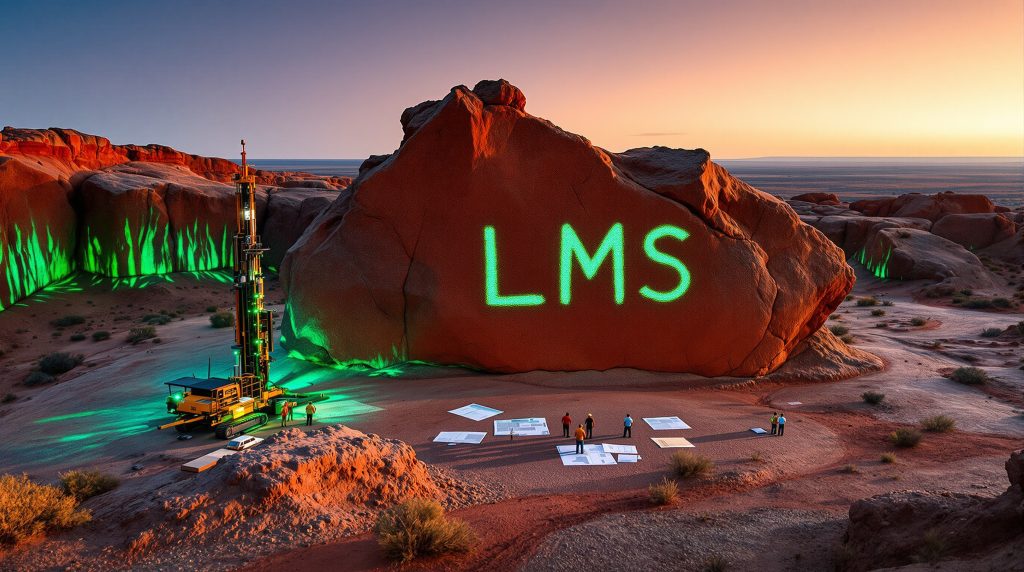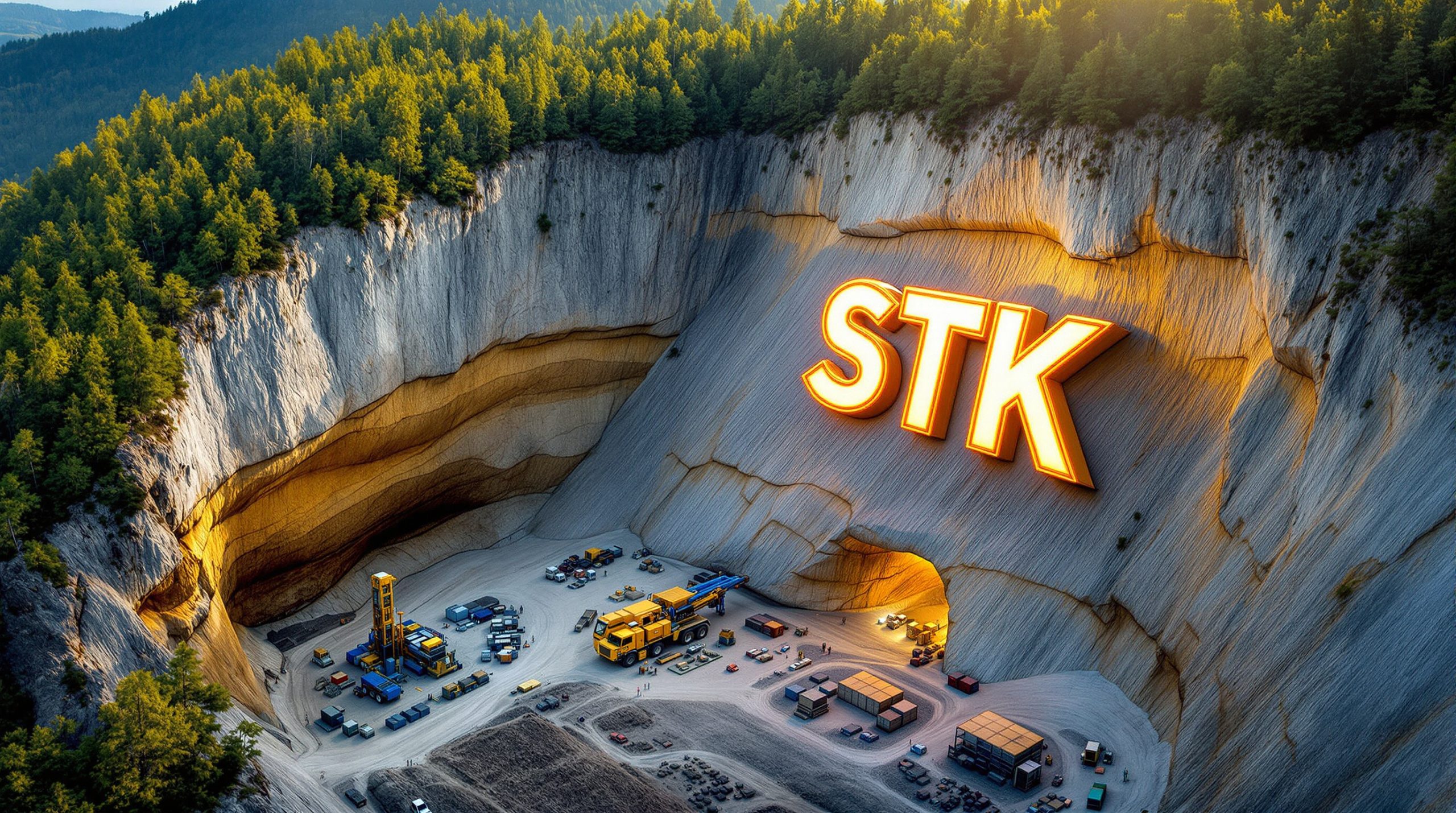Massive Copper Sulphide Discovery Propels Litchfield Minerals Forward
Litchfield Minerals (ASX: LMS) has struck exploration gold – or rather, copper – with the company announcing a game-changing 104-meter intersection grading 1.37% copper equivalent from surface at its Oonagalabi Project in the Northern Territory.
Monster Intercept Confirms Large-Scale Copper System
The standout drill hole (OGRC010) has delivered what Managing Director Matthew Pustahya describes as "a positive milestone for proving this system hosts grades as well as volume." The hole intersected over 100 meters of copper sulphide mineralization with multiple high-grade zones, including:
- 21m @ 2.26% CuEq from 144m (including 1.81% Cu and 1.58% Zn)
- 41m @ 1.42% CuEq from surface (0.85% Cu, 1.99% Zn)
- 30m @ 1.02% CuEq from 98m (0.58% Cu, 1.55% Zn)
What makes this discovery particularly significant is that every hole drilled to date has intersected copper mineralization, confirming the continuity and scale of the system.
"Hole 10 is a positive milestone for proving this system hosts grades as well as volume, over 100m of copper sulphide mineralisation, with multiple high-grade zones, is an outstanding outcome. Every hole to date has hit copper mineralisation, reinforcing the strength and continuity of this system," said Managing Director Matthew Pustahya.
Geophysics Unlocking the Oonagalabi Puzzle
The exploration team has successfully correlated high chargeability IP anomalies with copper-zinc sulphide mineralization, providing a roadmap for future drilling targets. Intriguingly, the high-grade mineralization was found within a zone of low conductivity, raising possibilities about nearby higher-conductivity zones.
Of particular note is the VT2 anomaly, described as a "highly conductive, laterally extensive" target with "clear potential to host high-grade mineralization." The company has already mobilized drilling equipment to test this promising 500m+ conductor.
"Seeing strong grades in a low-conductivity setting is particularly intriguing and broadens our search window within the wider system," noted Pustahya. "We are now extremely excited to be drilling VT2 due to the large (500m+), highly conductive anomaly found. Independent review by VTEM Mitre Geophysics supports a high likelihood of this having a sulphide source."
Understanding VTEM Surveys in Mineral Exploration
For investors new to mineral exploration, understanding the technology behind these discoveries is crucial. VTEM (Versatile Time Domain Electromagnetic) surveys are powerful geophysical tools used by explorers to detect conductive materials beneath the surface without drilling.
How VTEM Works
VTEM technology works by generating electromagnetic pulses from an aircraft-mounted transmitter. These pulses create secondary electromagnetic fields in conductive materials underground, such as metal sulphides. Receivers then measure these secondary fields, allowing geologists to identify potential mineralized bodies.
Key advantages of VTEM surveys include:
- Deep penetration – Can detect conductive bodies hundreds of meters below surface
- Large coverage – Surveys can cover tens of square kilometers quickly
- Target discrimination – Can differentiate between various conductive sources
- Cost-effective – Provides substantial data before expensive drilling programs
When VTEM surveys identify promising conductive anomalies, companies typically follow up with more detailed ground surveys like IP (Induced Polarization), which can further characterize potential mineral deposits by measuring their electrical chargeability and resistivity.
At Oonagalabi, Litchfield has used this precise approach, with VTEM modeling identifying multiple high-priority targets. The correlation between these geophysical signatures and actual mineralization in drilling gives significant weight to the prospectivity of untested targets.
Gold-Silver-Tellurium Bonus Adds to Potential Value
In addition to the copper-zinc intercepts, Litchfield has identified gold, silver and tellurium mineralization in rock chips taken directly above the VT1 conductor. A sample returned values of 0.6% Cu, 0.6 g/t Au, 14g/t Ag and 7 g/t Te.
The presence of tellurium is particularly noteworthy as it commonly accompanies gold in magmatic-hydrothermal systems. This geochemical signature points to a potentially fertile skarn/IOCG-style system with multi-metal potential.
Tellurium is considered a critical element used in solar panel manufacturing, specifically in cadmium telluride thin-film solar cells. It is also used in thermoelectric devices and as an additive in certain alloys. Its presence adds another dimension to Litchfield's exploration program.
Ambitious Drilling Program Advancing
Despite some operational challenges with ground conditions and equipment logistics, Litchfield is pressing ahead with an aggressive exploration program. The company is currently drilling the VT2 target and plans to test several other high-priority targets in the coming weeks, including:
- VT1 – A 400m long, highly conductive VTEM anomaly with gold-copper-silver-tellurium mineralization at surface
- "Bomb Diggity" cluster – A compelling magnetic/gravity anomaly interpreted as a potentially mineralized intrusion
Progress across both drilling rigs has been slower than anticipated, reflecting challenging ground conditions, equipment logistics and the technical nature of the targets. However, the company reports that every meter drilled is adding critical geological insight into what is shaping up to be a large copper-zinc system with lateral continuity.
Investment Thesis: Early-Stage Discovery with Scale Potential
Litchfield Minerals represents an exciting exploration opportunity at the discovery stage of the resource cycle. The latest results demonstrate several key attributes investors seek in copper exploration plays:
- Scale – Over 100m of continuous mineralization suggests significant tonnage potential
- Grade – Multiple zones exceeding 1% copper equivalent indicate economic potential
- Exploration upside – Multiple untested geophysical targets across the project
- Strategic metals – Copper and zinc are essential for the energy transition and infrastructure
While still early-stage, the systematic approach to exploration and consistent copper hits in every hole drilled to date build confidence that Litchfield is onto something substantial at Oonagalabi.
The current drilling program is designed to test several high-priority targets:
| Target | Description | Key Features |
|---|---|---|
| VT2 | 500m+ long, highly conductive VTEM anomaly | Interpreted to represent semi-massive to massive sulphides |
| VT1 | 400m long, highly conductive VTEM anomaly | Gold-copper-silver-tellurium mineralization at surface |
| Bomb Diggity | Strong magnetic anomaly with offset gravity anomaly | Interpreted to sit at the top of a steeply plunging intrusion |
| Oonagalabi Main | High chargeability western IP anomaly | Strong correlation with disseminated Cu-Zn sulphides |
Why Critical Minerals Investors Should Watch Litchfield
For investors seeking exposure to critical minerals exploration, Litchfield offers a compelling proposition. The company has positioned itself in the Northern Territory, a mining-friendly jurisdiction, exploring for metals essential to the global energy transition.
The confirmation of a large copper-zinc system at Oonagalabi, coupled with the potential for gold and other valuable metals, provides multiple pathways to value creation. With drilling ongoing and assay results pending for multiple holes, the coming weeks could deliver further catalysts for the stock.
The current exploration program is testing several high-priority targets that have been identified through geophysical surveys. Of particular interest is the VT2 anomaly, which represents a 500m long, highly conductive zone that could potentially host high-grade mineralization.
Additionally, the identification of tellurium in rock chip samples adds another dimension to the project's potential value. Tellurium is considered a critical metal used in solar panel manufacturing and other high-tech applications.
As the world faces increasing demand for copper and other critical minerals, discovery-stage companies like Litchfield that can demonstrate significant mineral systems will likely attract attention from both investors and larger mining companies looking to secure future supply.
Ready to Capitalise on Litchfield's Copper Discovery?
Discover why Litchfield Minerals' impressive 104-metre copper intercept could represent a significant investment opportunity in the critical minerals space. With multiple high-priority targets still to be tested and every drill hole hitting mineralisation, the Oonagalabi Project is demonstrating remarkable scale potential. For comprehensive information about Litchfield Minerals and their ongoing exploration programme, visit www.litchfieldminerals.com.au and position yourself early in this emerging copper discovery story.




